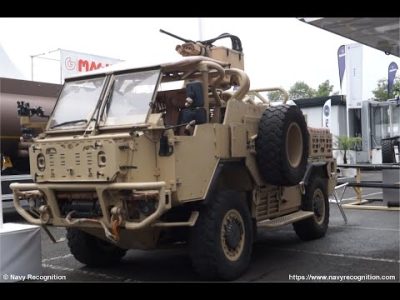Published on 12/11/2020 – Last Updated on 12/11/2020 by OTC
By Emil McHarsky, Lawyer, Academic and contributor at Spectrum Legal Consulting Law Blog. Legal, Software and Defence Industries.
The much drawn out procedure for procuring new patrol vessels for the Bulgarian navy appears to have almost finally (maybe?) drawn to a close, with the selection of an offering by German company Lurssen, apparently cantered on the company´s OPV 90 model.
“Unfortunately, it seems that the process neither properly addresses the Navy´s needs, nor does it appear to provide value for money for the funds allocated. What is important to note here is that the amount spent is not insubstantial, especially for a country with a small defense budget. In such a context, the government has a duty to maximize the return on investment as much as possible. This does not appear to have happened … if you´re going to fail, fail cheaply. There is no need to overburden the taxpayer with a dud. If, however, the Bulgarian MoD is serious about boosting the capabilities of the Bulgarian Navy, then it is important to spend in a way which brings the most bang for the taxpayer´s buck.”
To be absolutely certain, the Bulgarian navy is in serious need of an update. Made up of a mix of old second-hand Belgian frigates and much older Soviet ships, it is fair to say that the Bulgarian navy falls far below the level required of a NATO member and indeed, below (or far below) the level of its neighbors. This is not to mention that for many years, the Bulgarian Navy has not operated a single submarine – since the retirement of its last Slava class submarine in 2011, to be precise.

The question then remains, how to go about addressing the obvious deficiencies with the equipment of the Bulgarian Navy. This returns us to the potential purchase of 2 of Lurssen´s OPV 90s for the approximate sum of BGN820 million (USD463 million).
At first glance, the ships to be procured look promising and modern – potentially equipped with ESSM or MICA VL anti-air warfare missile and Exocet or RBS 15 anti-ship missiles – modern stuff! In fact, the OPV 90 appears to be an excellent and well-armed OPV design. The problems in this selection have nothing to do with the ships themselves, but rather, with an apparent lack of structured planning on the part of the Bulgarian MoD vis-à-vis the long term purpose of modernizing the Bulgarian navy, or indeed a thorough comparison of what the same amount of money could get the Bulgarian navy in terms of ships and capability.
Onto the first point. Purchasing anything involves a plan as to why the thing is being purchased and what it is expected to be used for. It is not clear that the Bulgarian MoD has a clear vision on that front, however. Conceivably, there can be two possible main roles for ships purchased for the Bulgarian Navy in Bulgaria´s context of a small NATO member:
1) to defend the country from external aggression by sea and/or air;
2) to fulfill Bulgaria´s obligations as a NATO member by participating in NATO actions.
Assuming the above list to be accurate, it is not easy to see how purchasing two OPVs (of any kind) help further those aims in a serious way. In a way, it is hard to judge, since no official information has been provided on relevant details such as: what radar will be used, how many missiles of each kind will be carried, what kind of VLS (if any) will the ship be fitted for or with, will there be any antisubmarine capability and if yes, what? Without all this information, it is really hard to judge the capabilities of these ships fairly. However, constrained as they are by size, it is unlikely that the capabilities would be substantial in any of these fields.
This, therefore, begs the question, why is the first step in the modernization of the Bulgarian Navy to purchase patrol ships and not larger, more capable vessels? Such vessels would be much better placed to address both of the above-identified tasks – anything below that level appears to be sticking a plaster on a chasm.
A quick look at the modernization efforts of the navies of Bulgaria´s neighbors will show the level Bulgaria could (and perhaps should) be aiming for, if it were serious about modernizing its forces in a meaningful way. Putting Turkey and Russia aside both because of their budgets and the fact that they design and build their own ships, we can compare with Romania and Greece. For reference, Romania has agreed to a € 1.2 Billion ($1.4 billion) deal with France´s Naval Group for four Gowind class corvettes, which also includes the modernization of two of Romania´s T22 frigates and the creation of a maintenance center and a training center. Even if the $1.4 billion number is divided neatly by 4, the outcome is $350 million. That unit cost per corvette would be much lower than that, however, since the $1.4 billion number includes the costs for refurbishing the T22 frigates and the creation of the centers listed above. Bearing in mind that one of Bulgaria´s new OPVs comes out to approximately $230 million dollars, it is not unlikely that Romania will be getting (understandably, due to difference in ship class) much more capable corvettes for roughly the same price Bulgaria is paying for its OPVs. The corvettes purchased by the Romanian Navy arguably offer a much more credible platform to pursue one or both of the two aims discussed above.

The second point of comparison is with Greece. While facing a much more difficult situation, due to tensions with Turkey, Greece is adopting a coherent strategy to its procurement which Bulgaria can learn from. Greece has identified a major issue – national defense from potential Turkish aggression – and has gone after the tools which they believe will address that issue. Specifically, two Belharra class frigates. These ships are expensive (potentially just under €1 billion each) but come with top of the line capabilities, including Thales Sea Fire 500 GaN radar, Exocet Missiles, CAPTAS-4 towed-array sonar, 32 Sylver VLS cells for ASTER 30 missiles, and crucially, MdCN cruise missiles, among others. Obviously, such a ship is beyond the financial capabilities of the Bulgarian navy, but this procurement serves to illustrate the point – you buy what you need. Greece needs these ships, in that configuration, and pays accordingly. Importantly, Greece has a clear idea of what it needs and what it wants.
It appears that the Bulgarian MoD is trying to carry out some sort of balancing exercise with this OPV purchase, but one which respectfully, does not appear to make sense. It certainly does not seem like these OPVs can meaningfully contribute to Bulgaria´s defense against any conceivable foe, nor does it seems likely that an OPV will do much to address Bulgaria´s commitments to NATO beyond more efficient patrolling of its own waters.
This allows a segway into the second relevant point, which is a broader price comparison. One excellent example is the Romanian Gowind procurement discussed above. There are however, many other similar examples that one can find without an inordinate amount of research. The list below includes ships which although more expensive per vessel, would provide equal or greater capability even when compared 2:1 with the OPV90. For instance:
1. Purchasing second-hand Type 23 frigates from the UK. The highly excellent Type 23 Duke Class frigates could potentially be had for $170 million, as was the case with Chile. To be clear, that was for the un-upgraded version of the ship, lacking for instance the Artisan radar and Sea Ceptor missiles of the most upgraded Type 23 vessels. It is conceivable, however, that the same upgrades could be added and the cost of two upgraded Type 23 frigates would not exceed (by much, if at all) the cost of the two OPVs purchased by the Bulgarian navy. At the same time, the Type 23 frigate, especially upgraded, would arguably far exceed
their capabilities.
2. Perhaps the most unflattering comparison to Bulgaria´s OPV deal, is the availability of the Danish Iver Huitfeldt and Absalon class ships. The Iver Huitfeldt class is a 6645 tonne Air Defence Frigate/Destroyer (depending on how one looks at it), which is packed with top of the range sensors (APAR and Smart L radars) and, at least compared to an OPV, armed to the teeth (32 cell Mk41 VLS and 24 x Mk56 VLS for SM2 and ESSM missiles, space for up to 16 Ship to Ship missiles). Clearly, the capability between the Iver Huitfeldt class and the OPV 90 purchased by comparison is incomparable. The kicker? One Iver Huitfeldt class ship costs
approximately $350m. Even one of those ships can provide capability equal to probably 3 or 4 of the OPVs envisaged for the Bulgaria navy at a lower cost. Buy two for around $700m, as Indonesia is likely to do, (slightly over budget, but not extravagantly so) and you´re looking at a naval force that has gone from zero to creating regional overmatch with its neighbors. The value for money argument here is compelling.
Even assuming that the budget is not flexible and the Bulgarian navy has no need for the comparatively overwhelming firepower of a top of the line Frigate/destroyer, the same Danish company also produces the Absalon class support ships. The Absalon Class is in fact the basis for the Iver Huitfeldt class (which is why the latter is so cheap, benefiting from the design work already done for the Absalon class), but is a toned-down version focused on more low to medium end missions, while still packing a palpable punch. To be precise, the Absalon comes with the Thales SMART-S Mk2 3D, 36 ESSM missiles, and 8 Harpoon anti-ship missiles. In addition, the Absalon class has military transport capabilities. The price –approximately US$225m. This would mean that for roughly the same price as is being paid now, the Bulgarian Navy could instead procure two highly capable, large multi-role vessels, which come armed like light frigates.

Also based on the Absalon/ Iver Huitfeldt base design, is the UK Royal Navy´s future Type 31 Frigate. Costing approx. $320 mil apiece and with capabilities somewhere between the Absalon and Iver Huitfeldt, this remains another solid potential option within this broader design family.
3. Another potentially compelling alternative, this time from Germany, is TKMS´ Meko A200 Anti-Submarine Warfare Frigate. The latest price numbers on a Meko A200 frigate come out to approximately €500 million ($585 million approx.). While even one of these frigates exceeds the cost of both OPVs purchased by Bulgaria, the capabilities it brings also dwarf the combined capabilities of said OPVs. While highly configurable, the Meko A200 frigate appears to standardize around a loadout of up to 16 Ship to Ship missiles and a 32 cell VLS system for AAW and Anti-Submarine missiles. In addition, the A200 class is a highly specialized Anti-submarine warfare frigate, with stealth characteristics and special attention paid to quiet acoustic signatures, as well as a varied sonar suite. This reads essentially as a fully-fledged combat vessel, capable of addressing subsurface, surface, and air threats.
Moreover, one capable of addressing both roles necessary for a Bulgarian navy ship identified above.

While the above examples probably serve to illustrate the point best, there are many like them. Honorable mentions include, for instance, Finland’s upcoming Pohjanmaa class corvette, which provides cutting edge GaN AESA radar from Saab (the Sea Giraffe 4A FF), a full range sonar suite for ASW operations (including hull-mounted, VDS and TAS), 8 cell VLS for 32 ESSM missiles and 8 Gabriel anti-ship missiles, for the approximate price of €325 million ($380 million) per ship (while some confusion seems to exist as to whether cited costs are per ship or per project, the lower number appears more plausible due to the size and equipment of the ships). While again, this cost approaches the combined value of the two OPV 90s, the ship is also far more capable and the price
is in fact likely to be lower, since the above values are provided for the entire program, presumably including development costs. Other examples that could merit analysis based on the rationale in this article, include Fincantieri´s Doha Class Corvette, Navantia´s Alfa 4000 Class Frigate, Israel Shipyards´ Sa’ar 72-class corvette, and potentially even Mitsubishi Heavy Industries´ 30DX/30FFM Frigate. All of those ship designs have the potential, subject to final prices being in the same ballpark as the top 3 examples described above (which is feasible given their characteristics), to address the needs and responsibilities of the Bulgarian navy better and in some cases at a similar cost, than the current option selected by the Bulgarian MoD. Essentially, they each have a greater, “bang for the buck” potential, something also discussed in the context of Finland´s corvette program.
The main hope behind this somewhat lengthy exposition is to bring attention to the fact that there are many alternative options that were potentially available to the Bulgarian MoD, which does not appear to have been considered. Whether this is because insufficient market research was done, because the tender requirements were too rigidly set, or because there are hidden costs (which the author is not aware of) associated with each and every one of the designs discussed here, the fact remains that on its face, the procurement for the Bulgarian Navy does not seem to make sense.
In particular, it seems to neither properly address the Navy´s needs, nor does it appear to provide value for money for the funds allocated. What is important to note here is that the amount spent is not insubstantial, especially for a country with a small defense budget. In such a context, the government has a duty to maximize the return on investment as much as possible. This does not
appear to have happened. If it is not possible to obtain high-level capability based on the allocated budget, the two options are to either expand the budget to actually meet operational needs or to, in fact, purchase even cheaper vessels that would carry out the bare minimum functionality. In the end, if the two major roles which could be expected of the Bulgarian Navy cannot be fulfilled by a purchase, it does not arguably matter much how far short the new ships fall – they still fall short. If that is to be the case, the current expenditure level is too high. In other words, if you´re going to fail, fail cheaply. There is no need to overburden the taxpayer with a dud. If, however, the Bulgarian MoD is serious about boosting the capabilities of the Bulgarian Navy, then it is important to spend in a way that brings the most bang for the taxpayer´s buck.
Emil McHarsky:
LinkedIn: https://www.linkedin.com/in/emilmcharsky/
Twitter: https://twitter.com/EMcharsky
Spectrum´s:
Website: www.spectrumlegalconsulting.co.uk
LinkedIn: https://www.linkedin.com/company/spectrum-legal-consulting/?viewAsMember=true
Twitter: https://twitter.com/legalspectrum
The post What exactly is Bulgaria´s naval procurement strategy playing at? appeared first on Naval News.














Comments